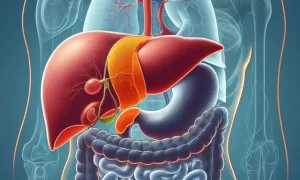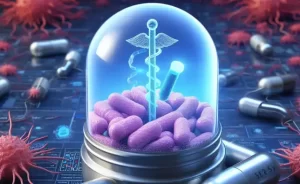“Sleeping Beauty” transposition system CAR-T
- Normal Liver Cells Found to Promote Cancer Metastasis to the Liver
- Nearly 80% Complete Remission: Breakthrough in ADC Anti-Tumor Treatment
- Vaccination Against Common Diseases May Prevent Dementia!
- New Alzheimer’s Disease (AD) Diagnosis and Staging Criteria
- Breakthrough in Alzheimer’s Disease: New Nasal Spray Halts Cognitive Decline by Targeting Toxic Protein
- Can the Tap Water at the Paris Olympics be Drunk Directly?
“Sleeping Beauty” transposition system CAR-T
- Should China be held legally responsible for the US’s $18 trillion COVID losses?
- CT Radiation Exposure Linked to Blood Cancer in Children and Adolescents
- Can people with high blood pressure eat peanuts?
- What is the difference between dopamine and dobutamine?
- What is the difference between Atorvastatin and Rosuvastatin?
- How long can the patient live after heart stent surgery?
“Sleeping Beauty” transposition system CAR-T.
In 1997, Ivics et al. used bioinformatics methods to reconstruct an inactivated transposable system Tc1/mariner in the salmon genome and restore its activity.
Since this transposition system has been “sleeping” for 10 million years, it was named the “sleeping-beauty” (SB) transposition system , using the metaphor of the famous fairy tale of the Brothers Grimm, emphasizing awakening to the new application.
Sleeping Beauty System
In the past two decades, both SB transposons and transposases have been extensively optimized to improve transposition activity.
Including the method of transposase codon optimization, the method of amino acid substitution and modification of the transposon terminal repeat sequence to construct a highly active transposase, which improves the transposition efficiency and stabilizes the gene transfer of stem cells/progenitor cells and differentiated cell types .
The transposon and transposase can exist in the same molecule (cis configuration) or in two different molecules (trans configuration).
Although the cis method seems simpler (only one plasmid needs to be delivered to the cell), the trans configuration is more widely used.
The advantage of trans: the transposase plasmid can be independently controlled to improve transposition efficiency.
The separation of transposons from transposase also creates the possibility of providing transposase in forms other than DNA, such as mRNA molecules and even soluble proteins.
Modifications (including mutations, deletions and additions) of nucleotide residues in the original SB transposon (pT) ITRs, improved transposons, and produced pT2, pT3, pT2B and pT4.
SB transposase is a 39kDa protein consisting of a DNA binding domain, a nuclear localization signal (NLS) and a catalytic domain, with a conserved amino acid motif (DDE).
Starting from SB10 transposase, the mutagenized hyperactive versions include SB11 (3 times higher than SB10), SB12 (4 times higher than SB10), HSB1-HSB5 (10 times higher than SB10), HSB13-HSB17 (higher than SB10) 17 times), SB100X (100 times higher than SB10) and SB150X (130 times higher than SB10).
The latest SB system uses the super-active SB100X transposase and pT4 transposon.
 Construction process of transposon CAR-T (Reference 2)
Construction process of transposon CAR-T (Reference 2)
Since 2000s, the transposon CAR-T began to be used in clinical practice (Document 3), and it has been continuously optimized and improved in practice.
Recently, Chicaybam et al. Reported a simplified and clinically applicable protocol, using the SB system to construct CD19-CART, and proved that it can produce strong anti-leukemia activity in vitro and in vivo.
Most CAR-T CD8 and CD4 subgroups have a central memory (TCM) (CD45RO−CD62L) phenotype (Reference 4).
Difference between plasmid (SB) and viral vector
The overall process is as shown in the figure below. The viral vector system has a complicated process and a long process, which takes 2-3 weeks.
The plasmid (SB) process is relatively simple and short, requiring 7-10 days.

Commonly used quality control indicators

Clinical Trials
At present, famous cancer clinical research institutions including the National Cancer Institute (NCI) and MD Anderson (MDACC) have carried out SB CAR-T clinical research. Overall safe and effective.

Recently, the well-known medical journal JCI published the early results of the CARCIK-CD19 clinical I/II trial (Clinical Registration Number: NCT03389035) at the University of Bicocca in Milan, Italy.
Four children and nine adult patients were injected with a single dose of CART cells.
There is no graft-versus-host disease (GVHD), neurotoxicity, or dose-limiting toxicity, and the reported toxicity is 2 grade I and 1 grade II cytokine release syndrome (CRS).
Six of the seven patients who received the highest dose achieved CR and Cri (CR with incomplete blood count recovery) on day 28.
In CR, 5 out of 6 patients are also minimal residual disease negative (MRD). Strong cell expansion is achieved in most patients.
The transposon system is relatively simple in process and lower in cost. If the clinical safety and effectiveness are fully verified, the accessibility of CAR-T therapy can be increased.
“Sleeping Beauty” transposition system CAR-T.
(source:internet, reference only)
Disclaimer of medicaltrend.org



